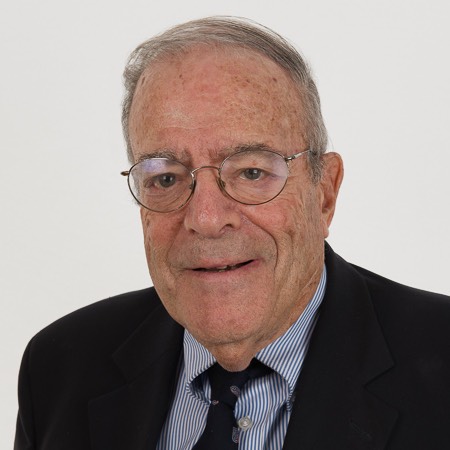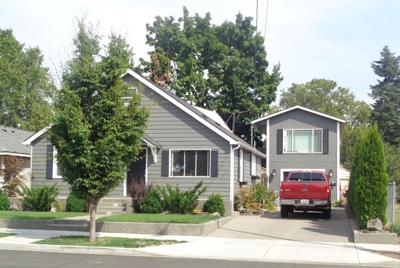Thanks to our Social Workers
- Details
- Written by Joanne Wallenstein
- Category: The Goods
 This Letter to the Editor was written by Deb Pekarek
This Letter to the Editor was written by Deb Pekarek
As we celebrate Social Work Month, we want to shine a light on all the
Scarsdale Edgemont Family Counselling Service’s
consummate social work professionals
This year especially and beyond you …
Care, care, care
Are devoted
Have high standards
Listen carefully
Provide resources, support and comfort
Are selfless
Work with heart and passion everyday
You are essential!
The Board of Directors of Scarsdale Edgemont Family Counselling Service recognizes and is inspired by your professionalism, expertise, compassion, energy and empathy as you address all the mental health needs of our community
Your work is truly unique and your presence in our community is crucial to our wellbeing and so much appreciated
Thank-you for becoming a social worker!
Thank-you for all the work you have accomplished during the Pandemic!
And thank-you for being an essential part of the
Scarsdale Edgemont Family Counselling Service’s Family!
You are the best!
Should Marker Tag, AKA Assassin, Be Permitted at SHS?
- Details
- Written by Sydney Piccoli
- Category: The Goods
 (This article and illutration, were submitted by SHS Senior, Sydney Piccoli)
(This article and illutration, were submitted by SHS Senior, Sydney Piccoli)
Marker tag, once known as assassin, is a senior class tradition at Scarsdale High School with no ties to the administration. Seniors pay an entry fee, which is then divided by the marker tag facilitators into first, second, and third prizes. Although there are several rules about perimeter and safe-conduct, the game’s general gist is that each participant is assigned a “target” that they must slash with a washable marker, which represents their elimination. The participant then assumes a new target and so forth until three people remain to claim their respective prize.
The Scarsdale High School administration has a long-established history of condemning marker tag. But is it a harmless tradition that restores the energy of a slumping senior class? Or is it a symbol of the ignorance that persists in Generzation Z, which has experienced a historic number of school shootings? Does the game incentivize violence or is it just that—a game?
Generation Z has grown up watching news reports of school shootings, mourning victims, and re-evaluating how safe they feel in schools. The last thing anyone would expect is for Scarsdale High School seniors to make light of school shootings. Over the years, marker tag has undergone dramatic changes to adapt to the current political climate and become more sensitive toward mass shooting victims. A few years ago, Scarsdale students transitioned from referring to the game as “assassin” to “marker tag.” Whereas assassin has commonly been used to describe school shooters, marker tag has no ties to school shootings and clarifies that it is indeed a game that should not be perceived as anything else. Furthermore, Scarsdale students now use markers as “weapons” compared to neighboring schools, who use water pistols and Nerf dart guns.
One could easily see how students running around wearing all black, holding toy guns, and shooting one another could easily prove insensitive and cross the line from enjoyable to inappropriate and malicious. But, students hiding behind lockers and trees trying to draw on each other’s hands with markers feel innocent enough. If more changes are made, such as not referring to the people as targets to be killed, but rather participants to get out, what is the harm? How would that differ from elementary school students playing tag on the playground?
Teachers and administrators have cited that seniors coming in fully covered makes it difficult to decipher whether or not they are a student or a person intending to harm Scarsdale High School seniors. The organizers and participants of the game have made changes, limiting where a person is allowed to be marked to prevent students from covering their faces in school. Furthermore, those opposing marker tag believe that the act of students killing one another can be too closely likened to school shootings. If it’s just an issue of how the game is being perceived, it seems as though it would be better for seniors to adjust the language they use for the game as opposed to not playing it completely.
Spanning decades, marker tag has become a staple tradition for Scarsdale High School seniors alongside prom, homecoming, and senior chalking. After three and a half years of hard work, students look forward to the rare opportunities they have to escape the chaos and stress of school and rejoice in time spent with their classmates. Marker tag fosters bonding as seniors form alliances with their friends and complain to one another how wearing long sleeves and sweatpants in the middle of March for the competitive edge is “totally worth it.” By the time marker tag rolls around, seniors are already mentally checked out, so it seems like banning the
game because it is “a distraction” feels obsolete. Students are also allowed to play marker tag or not, which means each individual can dictate whether or not they would like to sacrifice their time and money to join in.
Although Scarsdale High School seniors playing marker tag has remained a tradition, the world has and will continue to change. There was a time when a school shooting proved to be an anomaly, but it is 2022, and there have been 103 school shootings since 2018. The actions we take must reflect the current circumstances of the world. As of right now, outlawing marker tag seems to be an unreasonable course of action considering how many students enjoy the activity and form a community around playing. Scarsdale students have also taken proactive steps to make the tradition more sensitive to the victims of school shootings and appropriate overall, which should be recognized. If the administration continues to voice specific concerns and the student body works to adjust them, it seems as though the Scarsdale High School tradition of marker tag could continue for years to come.
Appelate Court Issues Decision on Case Challenging Scarsdale's 2016 Tax Revaluation
- Details
- Written by Joanne Wallenstein
- Category: The Goods
 Though it is now six years after the contentious 2016 tax revaluation in Scarsdale, a court decision on a case to contest the revaluation was released this week.
Though it is now six years after the contentious 2016 tax revaluation in Scarsdale, a court decision on a case to contest the revaluation was released this week.
Attorney Bob Bernstein represented a group of petitioners who formed an unincorporated association that brought a suit against Scarsdale to void the 2016 tax assessment roll charging that “the Town’s methodology failed to assess a uniform percentage of value to all real property within the Town. According to the complaint, the tax assessor used a “square root formula” which resulted in larger homes being valued at less than 100% market value and smaller homes being valued at 100% or more of their market value.
The Village of Scarsdale was represented by Terry Rice of the Vincelette Law Firm. A group of residents who believed that the committee did not represent all Scarsdale residents intervened and were represented by the law firm Quinn Emanuel.
The 2018 case was originally dismissed because the court found that the association did not have standing to sue. However in the appeal heard by the Supreme Court of the State of New York appellate division on October 5, 2021, Judge Betsy Barros found that the petitioners did have standing to seek a declaration that the revaluation had been conducted in violation of the Real Property Law or the US or New York constitutions. The appeals court wrote “An association or organization has standing when ‘one or more of its members would have standing to sue,’ ‘the interests it asserts are germane to its purposes,’ and ‘neither the asserted claim nor the appropriate relief requires the participation of the individual members.’”
However, the appeals court affirmed that the association did not have standing to seek any damages or refunds from the Village. The court explained that to seek damages, individuals would be required to prove the market value of their homes to determine whether or not they would be entitled to a refund. Since the petitioner is an unincorporated association with no tax assessment from the town, it lack standing to assert a claim against the town and therefore could not claim a refund or damages.
The appeals court made clear that it was not finding that former Village Assessor had violated the Real Property Law or the equal protection clause. Instead, the appeals court simply allowed the association the opportunity to attempt to produce evidence to show such a violation. Therefore, the appeal court remanded the case back to the Supreme Court of Westchester County. If the association wishes it can pursue a declaration, but even it proves its’ claims, the court cannot order any damages or refunds.
Commenting on the ruling, Marc Greenwald who is a Scarsdale resident and attorney at Quinn Emanuel said, "As counsel to a group of Scarsdale residents, we are pleased that the appeals court recognized that this association is not entitled to any refunds or damages, which would have come out of the Village, School Board and County budgets. Individual homeowners have the ability to grieve any unfair assessment. Homeowners should follow that process rather than sue the Village because the assessor chose a methodology they don’t like.
Edgemont Mourns the Passing of Local Resident Walter P. Stern
- Details
- Written by Joanne Wallenstein
- Category: The Goods
 A memorial service for Walter P. Stern is scheduled at Westchester Reform Temple on March 4 at 10:45 am.Longtime Edgemont resident Wally Stern passed away peacefully at home on Sunday, Feb. 27. He was 93 years old and had lived in Edgemont since 1962. A titan in the international investment community, Stern also had a profound effect on events at home and abroad through his leadership in many organizations, most notably those dedicated to the survival of the State of Israel and policies that favored American exceptionalism, in the U.S. and overseas. Still, he frequently said that his greatest achievement was raising a quality family. Stern gave credit for his family to his surviving wife of 64 years, Betsy May Stern, an active community resident and former president of the Edgemont School Board. Two of Wally’s children live in Edgemont and also served as School Board presidents.
A memorial service for Walter P. Stern is scheduled at Westchester Reform Temple on March 4 at 10:45 am.Longtime Edgemont resident Wally Stern passed away peacefully at home on Sunday, Feb. 27. He was 93 years old and had lived in Edgemont since 1962. A titan in the international investment community, Stern also had a profound effect on events at home and abroad through his leadership in many organizations, most notably those dedicated to the survival of the State of Israel and policies that favored American exceptionalism, in the U.S. and overseas. Still, he frequently said that his greatest achievement was raising a quality family. Stern gave credit for his family to his surviving wife of 64 years, Betsy May Stern, an active community resident and former president of the Edgemont School Board. Two of Wally’s children live in Edgemont and also served as School Board presidents.
Public tributes to Wally have arrived from near and far. In a letter to Trustees earlier this week, Westchester Community College described Wally as an “advisor to presidents, international heads of state, ambassadors, and a model of integrity in the investment business,” adding that “Wally cared deeply about making education accessible and equitable.” John Walters, President of Washington D.C.-based think tank Hudson Institute, expounded in a press release, “Through his leadership, Wally served as Hudson Institute’s ‘North Star,’ guiding the organization through the administrations of 10 U.S. presidents. As a result of his guidance and support, Hudson has become one of the world’s most respected policy organizations, dedicated to promoting American leadership for a secure, free, and prosperous future.” Robert Satloff, Executive Director of the Washington Institute for Near East Policy, explained in a press release, “In his quiet, unassuming way, Wally — as he was affectionally known by all — was a pathbreaking pioneer in the world of finance and then again in the world of ideas,” adding that he was “a consistently wise source of counsel, a remarkably generous patron who never sought credit for his philanthropy, and a true gentleman, unfailingly warm and kind. Wally was a great and good man.”
Stern was born on Sept. 26, 1928, in Manhattan. He graduated from New Rochelle High School in 1946. In 1950, he received a bachelor’s degree (Phi Beta Kappa) from Williams College. In 1952, Stern received an MBA, with distinction, from Harvard University. He then served his country as an Air Force officer. For the next two decades, Stern worked at Burnham & Company in New York, where he was responsible for research, institutional sales, and investment management. In 1973, Stern joined the Capital Group Companies. He served as chairman and a director of Capital International, Inc. and chairman of the New Perspective Fund and the Emerging Markets Growth Fund. Stern had responsibilities for following financial and political developments worldwide.
Stern was Chairman of the Institute for Chartered Financial Analysts and the Financial Analysts Federation, where he pioneered the CFA examinations. He taught investments at several universities and was a longtime board member at Temple-Inland, Inc. Stern also became a mentor to countless investment professionals and others.
Outside the investment community, Stern was most passionate about Hudson Institute, which he helped bring to prominence in the 1970s with his close friend Herman Kahn. Stern served for decades as Hudson’s Chairman. Among the many other organizations that he served as board member and investment advisor were The Washington Institute for Near East Policy and the Republican Jewish Coalition.
Known for displaying fairness and deflecting credit for his good deeds, Stern lived by the motto: You’d be surprised how much you can accomplish in life if you don’t care who gets the credit.
Stern’s local public service included stints as president of the Longview Civic Association, member of the Edgemont School Board Nominating Committee, and coach of many youth sports.
Stern’s grandchildren recall his often chronicling on his birthday that, “When I graduated from college, I set four goals: (1) Earn the respect of my professional peers; (2) Gain financial stability; (3) Make the world a better place; and, (4) Raise a good family.” He hit for the cycle!
In addition to his wife Betsy, Stern is survived by his children Sarah May Stern (Mark Rosenblatt) of Edgemont; William May Stern (Ann Shapiro) of Nashville; and David May Calhoon Stern (Mary Elizabeth Calhoon) of Edgemont; by his grandchildren Judd Rosenblatt (Melanie Plaza), Rebecca Rosenblatt (Ben Manson), Tom Rosenblatt, Zachariah Stern, Phoebe Stern, Kasey Stern, Gavin Stern and Fiona Stern; by two great-grandchildren Trent Rosenblatt and Leo Manson; and by his younger brother Richard Stern (Phyllis Edelstein). He was preceded in death by his parents Leo and Marjorie Stern and his brother Robert Stern.
A memorial service is scheduled at Westchester Reform Temple on March 4 at 10:45 am. Proof of vaccination and booster is required. The service can be live-streamed at wrtemple.org. In lieu of flowers, please consider gifts to Hudson Institute or Washington Institute for Near East Policy.
Proposed NYS Laws Would Override Local Zoning Code to Clear the Way for Affordable Housing
- Details
- Written by Joanne Wallenstein
- Category: The Goods
 Two proposed laws in the NYS Legislation could have far-reaching effects on zoning in Scarsdale. Both laws would allow state law to override local zoning code to accommodate the construction of affordable housing and potentially greatly increase population density.
Two proposed laws in the NYS Legislation could have far-reaching effects on zoning in Scarsdale. Both laws would allow state law to override local zoning code to accommodate the construction of affordable housing and potentially greatly increase population density.
The first, Senate Bill S4547A, would clear the way for “Accessory Dwelling Units” on lots now zoned for single family homes. These units could be basement, attic or garage apartments or separate structures built on the property of single home lots.
The bill is sponsored by Senator Pete Harckham, who represents Westchester County and parts of the Hudson Valley, and Manhattan Assembly Member Harvey Epstein, would legalize accessory dwelling units (ADUs) statewide.
Modeled after California’s recent laws the bill would require local governments to pass ordinances allowing secondary homes on residential lots, with strong protections to ensure that such ordinances actually allow ADU construction. The bill is targeted both at the legalization of garage conversions, basement apartments and the construction of new units, like backyard cottages.
The bill gives homeowners a streamlined process to create ADUs; offering a state financing program to help low- and-moderate income homeowners finance ADU creation; and ensuring that tenants in ADUs are protected against discrimination, unreasonable rent increases, and unwarranted evictions.
The provisions of the new law are specifically targeted at overcoming obstacles that have been used in the past to block ADU’s. The bill goes as far as to specify that no setback greater than 4 feet is required for an ADU structure, meaning your neighbor could build a second house in their yard just 4 feet from the property line. And what about Scarsdale lot coverage requirements? The new law “establishes that ADUs do not count toward the existing allowable density of a lot.” Will increased parking be required? The bill orders municipalities to “Relax parking requirements for ADUs, including providing that ADUs do not require additional onsite parking and that an existing parking structure such as a garage may be converted to create an ADU without building a replacement parking structure.”
For communities like Scarsdale with detailed zoning laws to regulate lot coverage, building height, setbacks, trees, street parking and more, this new law would trump all those restrictions and permit homeowners and developers to maximize the potential for each lot.
And this not the only bill that has been introduced to increase affordable housing.
A second bill will require communities to permit the construction of multi-family structures on any property within ½ mile of the railroad station.
Under this code, municipalities would be required to rezone areas around rail transit to promote new multifamily housing development. The proposal may allow up to 25 units per acre that is within a half mile of a train station. This Transit Oriented Development proposal may be modeled after recent changes in Massachusetts. Here are some of those highlights:
-The district must be of “reasonable size.”
-Multi-family housing must be allowed at a minimum gross density of 15 units per acre.
-This multi-family housing must be allowed “as-of-right.”
-The zone must be no more than a half mile from a commuter rail station, subway station, ferry terminal or bus station.
-Allowable housing must be suitable for families with children and have no age restrictions.
If this was to pass, multifamily homes and apartments could be built on any lot within a half mile of the train station, including lots that are now zoned for single family homes. Consider Fox Meadow Road, Walworth Avenue and other village streets that parallel Metro North.
How would the Village handle the additional infrastructure needs for water and power? Would the schools be able to handle the influx of children? These are all questions that the state would leave the localities to manage and no state funding would be provided to facilitate infrastructure requirements.
The NYS Conference of Mayors provided testimony on the proposed NYS budget, which includes these two proposals. Here is what they said about the provisions:
These blunt, one-size-fits-all land use mandates – which are not germane to the State Budget-making process – would be the first of their kind in New York and in direct contravention to the State’s long-held approach of locally determined land use planning. Any erosion of home rule zoning powers are likely to result in disjointed development that is out of character with a community’s desires, would generate overwhelming local opposition, and would certainly result in legal challenges to ADU and TOD projects. Universal ADU and TOD standards are likely to have significant, costly impacts that would negate the bill’s underlying intent to expand housing options. Forcing these standards on already established communities without taking into consideration the myriad impacts such abrupt and massive changes would have on the municipality is likely to result in incongruous development, not to mention substantially strained municipal services and infrastructure, including streets, sidewalks, and water and sewer systems.
State efforts to foster the use of ADUs and TODs will only be successful if undertaken in conjunction with New York’s established home rule laws and local land use planning process. A better approach to foster appropriate and successful implementation of ADU and TOD policies would be for the State to facilitate informed local decision-making, including the drafting of model local laws/regulations, analysis of the impacts of adopting such policies, training for local land use officials, and State funding to implement such development. The ADU and TOD proposals advanced in the Governor’s Executive Budget fail to do any of this and, instead, impose a top-down mandate that ignores New York’s sacrosanct tradition of community-based land use decisions.
Larchmont Mayor Lorraine Walsh sent the following email to her residents, asking them to write to their State Senator and State Assemblyman. Here is what she said:
As part of the Governor’s Executive Budget for FY2023, two amendments to NYS land use laws are proposed. One amends the NYS real property law and would require Larchmont to authorize the creation of 1 Accessory Dwelling Unit (ADU) per residential lot. The other, a Transit Oriented Development (TOD) mandate, amends NYS village law and would require Larchmont to permit development of at least 25 dwelling units per acre on any residentially-zoned land within ½ mile of a Metro-North train station.
The stated goal of these amendments is to provide opportunities for increasing socio-economic diversity in communities by expanding the inventory of smaller and/or multi-family dwelling units and also to promote more environmentally sustainable, transit-oriented housing. While I believe these goals have merit, I do have serious concerns about this one-size-fits-all approach.
The requirements for all cities, towns and villages are the same, with no consideration given to area, population size, existing housing stock, or development problems related to flooding, infrastructure, etc. Both proposed amendments are worded in a way which, for all practical purposes, removes Larchmont’s locally determined land use process. Additionally, the normal application review and hearing is circumvented, neither amendment has requirements for the housing created to be affordable, and there is no recognition of, or funding for, infrastructure issues and investments that would be necessitated by increased and hastily-implemented development.
The NYS senate and assembly will present alternate budgets in the coming weeks. I have expressed my concerns to Senator Mayer and Assemblyman Otis and asked that they consider these issues as they work with their colleagues on compromises to the existing proposals. Please let Senator Mayer and Assemblyman Otis know your opinions. As a starting place for more details, here is the proposed ADU (Part AA – page 165) and TOD (Part EE – page 185) legislation, testimony (page 4) from the NY Conference of Mayors(NYCOM) , and testimony from the NYS Association for Affordable Housing.
Best,
Mayor Lorraine Walsh
We wondered if these two bills were likely to pass without public hearings or input from municipalities. Here is a statement from Mike Murphy, a spokesperson for the State Senate Democrats:
"We are currently looking at the proposed legislation that is also included in the Governor's budget and having discussions as a conference while the budget process moves forward. While we understand the need for affordable housing, there must be a balance respecting the essential role local governments have regarding their local zoning."
If you are concerned, write to your State Assemblywoman Amy Paulin, State Senator Andrea Stewart Cousins and Scarsdale Mayor Jane Veron.













